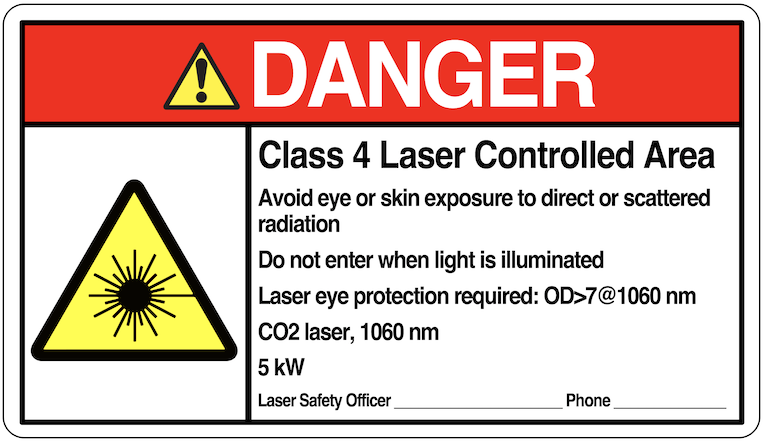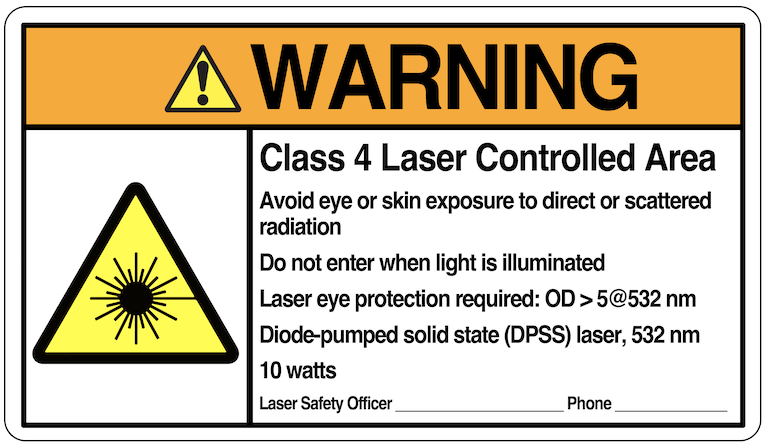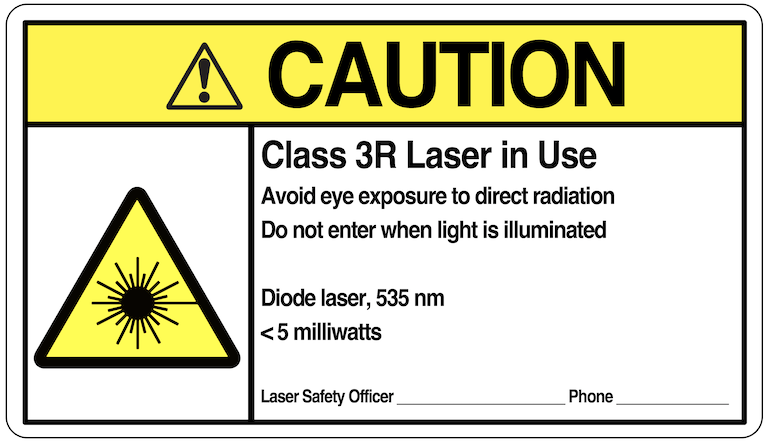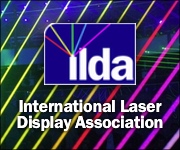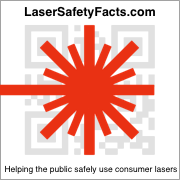Danger, Warning and Caution signs
Laser safety signs and labels have a large “signal word” to indicate the hazard level. The word choice — Danger, Warning or Caution — is usually based on the laser Class. More information about laser Classes is here.
Laser controlled area signs
The signs on this page are intended for “laser controlled areas” such as a laboratory where lasers are in use. They warn persons entering the area to be alert, and that protective eyewear may be needed. (Other pages at this website have product labels which go onto the actual laser, or laser system.)
You can edit the signs for your own use. There are two formats:
You can edit the signs for your own use. There are two formats:
- One format is a PNG picture file where you can overlay a white box with new text for your particular situation.
- The other format is a Microsoft Word document where you can edit the text information. This was created using Word 2016 and thus may not appear properly on older versions of Word, or on other software that imports Word files.
Danger
“Danger” and the red color is used for a hazardous situation that will result in death or serious injury if a person is not careful, or if control measures fail.
For signs in laser controlled areas, “Danger” is currently used only with Class 4 lasers with exposed beams that have multi-kilowatt output power or high pulse energies. According to the ANSI Z136.1 standard, 2022 version, "This signal word is to be limited to the most extreme conditions."
Note that prior to 2014, “Danger” was used at various times for Class 3R, Class 3B and Class 4 lasers. In 2014, the ANSI Z136.1 standard was changed to require “Danger” only for multi-killowatt Class 4 lasers.
Older signs and labels with “Danger” for lower-powered 3R, 3B and 4 lasers were grandfathered in, so that laboratories and others did not have to re-do all their signage. Some have said this can lead to hazardous confusion.
For signs in laser controlled areas, “Danger” is currently used only with Class 4 lasers with exposed beams that have multi-kilowatt output power or high pulse energies. According to the ANSI Z136.1 standard, 2022 version, "This signal word is to be limited to the most extreme conditions."
Note that prior to 2014, “Danger” was used at various times for Class 3R, Class 3B and Class 4 lasers. In 2014, the ANSI Z136.1 standard was changed to require “Danger” only for multi-killowatt Class 4 lasers.
Older signs and labels with “Danger” for lower-powered 3R, 3B and 4 lasers were grandfathered in, so that laboratories and others did not have to re-do all their signage. Some have said this can lead to hazardous confusion.
The Danger area sign is available as a PNG picture or as a Microsoft Word document.
Warning
“Warning” and the orange color is used for a hazardous situation that could result in death or serious injury if a person is not careful, or if control measures fail.
For signs in laser controlled areas, “Warning” is currently used for Class 3B and 4 lasers where the output exceeds the Maximum Permissible Exposure (MPE), except for multi-kilowatt Class 4 lasers that use the Danger signal word instead.
“Warning” was first used for laser signage after revision of the ANSI Z136.1 standard in 2014. Prior to this time, laser signs and labels used either “Danger” or “Caution”.
For signs in laser controlled areas, “Warning” is currently used for Class 3B and 4 lasers where the output exceeds the Maximum Permissible Exposure (MPE), except for multi-kilowatt Class 4 lasers that use the Danger signal word instead.
“Warning” was first used for laser signage after revision of the ANSI Z136.1 standard in 2014. Prior to this time, laser signs and labels used either “Danger” or “Caution”.
The Warning area sign is available as a PNG picture or as a Microsoft Word document.
Caution
“Caution” and the yellow color is used for a hazardous situation that could result in minor or moderate injury if a person is not careful, or if control measures fail.
For signs in laser controlled areas, “Caution” is currently used for Class 2, 2M and 3R lasers that do not exceed the applicable MPE.
These Classes are relatively safe. For example, in the U.S. lasers sold as pointers are Class 2 or Class 3R. Unintentional exposure should not cause injury. For this reason, display of a Caution sign in a laser controlled area may not always be mandatory.
For signs in laser controlled areas, “Caution” is currently used for Class 2, 2M and 3R lasers that do not exceed the applicable MPE.
These Classes are relatively safe. For example, in the U.S. lasers sold as pointers are Class 2 or Class 3R. Unintentional exposure should not cause injury. For this reason, display of a Caution sign in a laser controlled area may not always be mandatory.
The Caution area sign is available as a PNG picture or as a Microsoft Word document.
Incidentally, in the yellow triangle caution logo, the "stem" of the sunburst faces to the right. This symbolizes a bright light source that is emitting a directional beam (going towards the right). This information comes from an expert who helped develop laser safety standards starting in the 1960s and 1970s.
Disclaimer
SAFETY NOTICE: This website is intended for the educational, instructional and informational purposes of the user and is not to be considered a substitute for a knowledgeable and trained Laser Safety Officer (LSO) with the duties and responsibilities as defined in the ANSI Z136 standard published by the American National Standard Institute.
While the labels herein may be sufficient for relatively simple and common laser types, for more complex situations, consult an expert in laser regulatory compliance.
While the labels herein may be sufficient for relatively simple and common laser types, for more complex situations, consult an expert in laser regulatory compliance.
